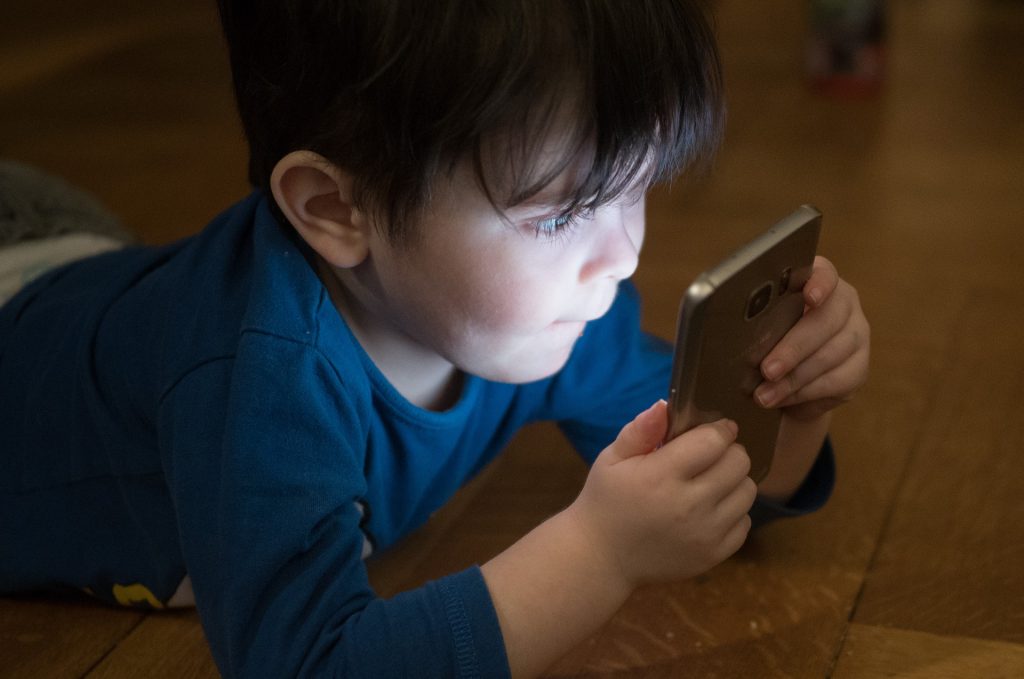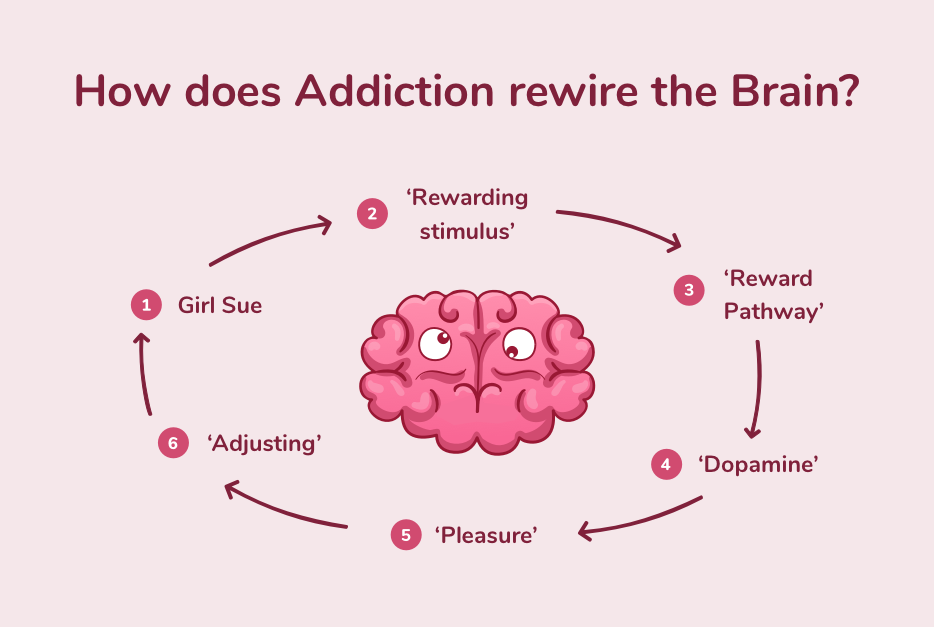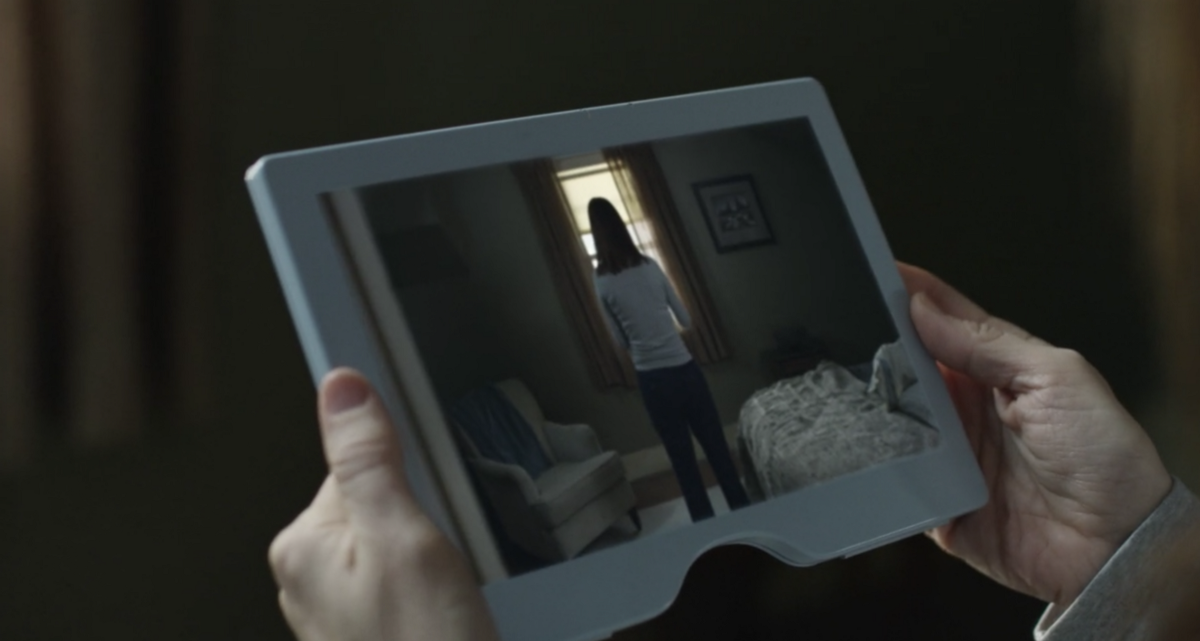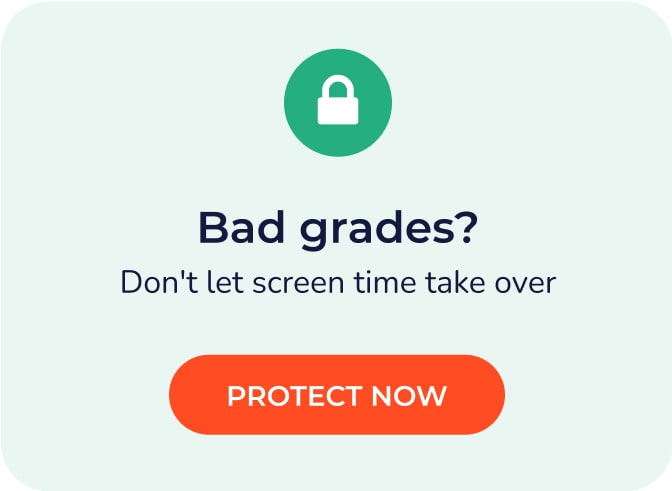Breaking Free from the Grip of the Smartphone: A Comprehensive Guide
In our digital world, smartphones have become our indispensable companions, catering to a multitude of our needs; from booking holidays to connecting with old friends. However, like with all good things, an overreliance on these handy devices can become problematic.
While the idea of ‘phone addiction’ might not seem like a serious one, it shouldn’t be taken lightly. Research suggests that almost half of Americans are addicted to their cell phone and a huge 70% spend more time on their device than they do with their romantic partner.
It’s not just a North American problem either. According to the UK’s Telegraph newspaper, British kids are some of the most housebound and screen addicted in the world. Two-thirds of the UK’ children spend less time than an hour a day outsides (the minimum recommended by the UN for prisoners!). Almost a fifth of these children also don’t play outside regularly at all, the main excuse given being the weather with the same survey finding that British parents estimated that their children spend a fifth of their free time inside in front of a screen.
Despite all the advantages of technology, smartphones should never replace real-world interactions. Phone addiction might not injure your health like alcohol can, but it can have a profound effect on the way you socialize, perceive and enjoy the world around you.
How can smartphone addiction impact your life?
Cell phone overuse can result in a number of consequences that can impact negatively on a person’s social life as well as their emotional and mental wellbeing.
According to experts, here are some of the signs of cellphone addiction to look out for:
- A feeling of anxiety when your phone isn’t in reach or you don’t have cell phone service.
- Phone use interferes with your daily activities, chores, and tasks.
- Smartphone usage has ruined your vacation with family or spoiled social events with friends.
- Experiencing injuries or harmful effects due to cell phone usage, such as neck pain or eye strain.
- Losing sense of time due to cell phone distractions.
- Withdrawal from the physical world, distancing oneself from friends, family, and activities once enjoyed.
- Smartphone usage has put an important relationship or profession in jeopardy.
- Previous attempts to limit cell phone usage haven’t succeeded.
If you’ve experienced any of these symptoms, it may mean you’re experiencing cell phone addiction, and it’s important to take action to avoid any further negative consequences from happening to you.
In this guide, we’ll walk you through effective strategies to disentangle both you and your child from the clutches of smartphone addiction.
11 powerful strategies to get a grip of your cell phone addiction:
1. Maintain Device Diversity
Your smartphone is a technological marvel that can substitute books, newspapers, TV, gaming consoles, computers, and a multitude of other tools. While this vast functionality is a testament to human innovation, it’s essential not to let our smartphones monopolize our attention entirely.
The convenience alone makes this easy to do, but remember to vary up your mediums – aim to read a book a month as a challenge and prioritize your non-screen based hobbies wherever possible!
2. Diversify Your Activities:
Transitioning between various activities is not only beneficial for your brain and body, but it also ensures your attention isn’t solely tied to your smartphone.
Make your life more enriching by engaging in a variety of experiences, and keep your smartphone locked away during family dinners, or important meetings.
3. Set Screen Time Boundaries (and stick to them!):
An excellent strategy to manage your smartphone usage is to limit your screen time and monitor how much you’re using your phone across the day.
Make a schedule and limit yourself to a couple of hours a day – you’ll be surprised when you discover how much time you’ve actually been spending glued to your phone.
4. Disable Distractions:
Notifications can be incredibly tempting and disruptive. Consider disabling alerts to resist the urge to dive into endless scrolling sprees. If you’re worried about missing out on important updates, start by simply turning off the sound.
Better still, while you’re working, keep the phone out of your eye line. Research shows that simply having your phone on your desk by your side is enough to impact your concentration and productivity.
5. Establish Daily Phone-free Periods:
There are plenty of moments during the day when your smartphone isn’t necessary. Designate phone-free times, like during meals or family time, to reduce digital distractions and create healthier habits. You’ll notice that your phone dependency lessens while you spend more quality time with loved ones.
6. Out of Sight, Out of Mind:
An effective strategy to reduce any smartphone addiction is to keep your device out of immediate reach. Place your device on mute, tuck it away in a drawer, or turn it off completely to avoid the constant distraction that it creates.
7. Use Digital Locks:
If you can’t put your cell phone down with will power alone, Kidslox offers the ability to schedule times when your device is locked or shut down after your daily screen time limit is reached. This tool is not just helpful for children, but can also aid adults in breaking free from their digital dependencies too!
8. Keep the Bedroom Device-free:
Research tells us that smartphones are terrible for sleep. Keeping your cell within arm’s reach while in bed can tempt you to check it before sleeping or right after waking up. It’s also suggested that its presence in the bedroom can also disrupt your sleep quality due to notifications and the blue light that the device emits. Keeping your bedroom device-free can help in reducing your phone addiction and promoting better sleep hygiene.
9. Replace Bad Habits with Good Ones:
You’re not going to be able to put the phone away if it’s filling a boredom void. Consider making a list of some goals and achievements that you would love to fulfill and see how you might use the time you spend scrolling to meet them! It could be improving your reading, learning a language or brushing up on cooking skills.
So, the next time you’re bored and instinctively reach out for your phone, consider your goals instead! Swapping a habit of constant phone checking with reading or another positive activity can drastically change your relationship with your smartphone.
10. Prioritize Real Interactions:
Engage more with the people around you instead of connecting with them solely through digital platforms. Embrace the beauty of face-to-face conversations and shared experiences. The more time you spend with the people you love without the distraction of your smartphone, the more fulfilled and happy you will feel.
11. Change Your Mindset:
The good news is, if you’re reading this, you’re already considering a positive shift in behaviour to benefit your emotional and physical wellbeing. A simple shift in mindset can significantly influence your relationship with your phone. Before reaching out for your device, ask yourself whether it’s genuinely urgent or if it can wait. Are you feeding a growing cell phone addiction, or is it a really necessary use of your time?
Addictions, whether they’re to alcohol, gambling or your smartphone often have the same root. The dopamine feedback loop that the problematic behavior creates can actually alter our brain chemistry, making it a physical as well as emotional dependency.
Recognize that addiction often surfaces when there are issues elsewhere in your life. Leading a fulfilling life, with effective coping mechanisms like good communication with loved ones, can significantly reduce the likelihood of developing any type of addiction. Therefore, the lasting solution to smartphone addiction isn’t necessarily about the phone itself—it’s about changing your priorities and investing more time in the people around you.

Guiding Your Child Away from Smartphone Addiction in 6 Simple Steps
As a parent, the struggle between allowing your child some digital leisure time and encouraging outdoor activities can be a challenge. Young brains don’t have the same emotional maturity as adult ones, making the possibility of developing a smartphone addiction a very real one.
As a parent myself, I definitely notice that while an afternoon spent at the park leaves my kids happier and more content than the same amount of time spent on devices. The latter often ends up in squabbles and general grumpiness.
Creating a balanced approach towards technology in your home isn’t an easy task, especially if those bad habits are already established. But, don’t worry—we’ve got you covered! In addition to the above 11 strategies, here are more specific tactics to help your kids overcome an over dependence on smartphones.
1. Lead by Example:
Kids often mirror the behavior of adults. From eating vegetables to reading more – experts all agree that what you do makes a big difference in how your children behave. Show them that it’s possible to engage in a multitude of activities without the constant presence of a smartphone – and that you can enjoy it too!
Dependence on technology is not just a teenage problem. The example set by parents is the fundamental guide for the behavior of younger children and whilst teens may not be quite so quick to follow suit, they’ll certainly be hostile towards perceived hypocrisy on our part.
2. Clear Expectations and Consistent Rules:
Set clear rules for smartphone usage—decide when, where, and for how long they can use their devices. You can help bring this to life by creating a cellphone contract with your kids and putting it somewhere easy to refer to in the home. This covers everything from time allowed on the phone to housekeeping too. Kidslox has a handy guide to help you create one that works best for your family here.
3. Go Offline!:
Encourage offline activities. Invest in games, sports equipment, art supplies, or books to foster a love for diverse experiences. If your child has a hobby or special interest, really pay attention and help them as much as you can to devote more time to it.
Spend a day outdoors and ask your children to participate in the planning of it, that way you know you’re doing something that they’ll be engaged in and more willing to do without the constant presence of their smartphone in tow.
4. Talk About It:
Communication is key when it comes to educating your child about the potential dangers and drawbacks of excessive smartphone use. Make sure they understand why you’re setting certain rules, and allow them to have a reasonable say in what they are, which will allow them to feel a part of the discussion.
It may seem obvious to you that your teen’s excessive phone use is disruptive and is becoming a problem, but they might not see it that way. Make sure you talk with them about some of the potential downsides to their behavior, including the negative effects multitasking can have on their focus and productivity and the risk constant social media use can have on their real-life social skills. If they understand the problem they’ll be more motivated to join in with efforts to solve it.
Allow them to prove that they can follow the rules before micro-managing their behavior and remember to keep checking in on them and review what’s working as time goes on.
5. Provide Alternatives:
Offer alternatives like family game nights, outings, or activities that can be done together as a family. This not only promotes bonding but also demonstrates the fun that can be had without technology!
6. Teach them Time Management:
Assist your child in creating a balanced schedule that includes homework, outdoor play, hobbies, and, yes, some screen time as well. Kidslox can really help you to keep to the schedule you set as a family by locking certain apps when time’s up. It can also help you by providing a statistical overview of the amount of time that your teens are spending on different smartphone activities, so you can trouble shoot where the potentially addictive behaviors might stem from.

Remember, it’s not about completely eliminating the use of smartphones. It’s about fostering a healthy relationship with technology that permits its use in a controlled and productive manner. Be patient, stay consistent, and most importantly, enjoy the journey towards digital detox. After all, the process itself is the reward!
Related Posts
How to become less addicted to your phone: Tips that really work
Technology seems to make our lives easier and better. At first sigh…
Why are kids addicted to their phones?
Does your child check their smartphone every time they receive Face…
Smartphone addiction causes imbalance in kids brains
|

Parents and children keep tapping on apps and social media, because they’re designed to build habitual behaviour. Once you get hooked by persuasive technology, it means that your brain’s neurotransmitters have been damaged and become dysfunctional. Neurotransmitters are a type of chemical messenger which transmits signals across a chemical synapse, from one neuron to another “target” neuron. Phone addiction ruins the way our brains work, causing chemical imbalance that could lead to severe anxiety, tiredness and depression.
There are two types of neurotransmitter that are important in the matter of digital overuse and screen time problems: GABA (gamma aminobutyric acid) and dopamine. Here are some useful facts to know, before you check your phone’s notifications again.
“Our product is a slot machine that plays you”
Nowadays tech companies are not hiding the fact that they always try to consume as much of our time and conscious attention as possible. Sean Parker, ex-president of Facebook admitted: “We give you a dopamine hit. It literally changes your relationship with society, with each other. It probably interferes with productivity in weird ways. God only knows what it’s doing to children’s brains.” They hired psychologists and “attention-engineers” to glue us to screens and click the “right” buttons. Such tech-companies as Google and Apple have spent decades commercializing our attention and advancing addictive design. And now our brains can’t quit our gadgets, because we played a dangerous game with a dopamine.
What dopamine does in the brain
As a neurotransmitter dopamine helps to control our brain’s reward and pleasure centers. It was discovered in 1957 as one of the major transmitters, which carry urgent messages between neurons, nerves and other cells in the body. For instance, thanks to dopamine we know to get a glass of water when we feel thirsty. In the 1980’s, after the experiments on rats by Wolfram Schultz, a neuroscientist at Cambridge University, showed that dopamine levels impact on desire, ambition, addiction and sex drive. The scientist showed that, inside the midbrain, dopamine relates to the reward we receive for an action. For the research, he placed pieces of apple behind a screen and saw a huge dopamine response when the rat bit into the food. The dopamine process anticipates a reward to an action, and if the reward is met, boosts the behaviour to become a habit.
Then he found that rewarding it in a random schedule is the strongest way to reinforce a learned behaviour in rats. So, when you’re favoured by luck, dopamine is released. To compare, look at the randomness of the Facebook feed. All social media apps today use “digital confetti” to give the user what he wants at random intervals.
The power of the dopamine system is very familiar to drug addicts and smokers. Every habit-forming synthetic drug affects the dopamine system by dispersing more and more dopamine than usual. Overusing is the consequence of wanting more and more pleasure to feel normal.
“These unnaturally large rewards are not filtered in the brain – they go directly into the brain and overstimulate, which can generate addiction. When it happens we lose our willpower. Evolution hasn’t prepared brains for these drugs. We are abusing a useful and necessary system,” – Wolfram Schultz explains.
More recent research of the Yale School of Medicine in New Haven, showed that dopamine levels are one of the key differentiators between human beings and other apes. Human striatum produce three times more dopamine than in the ape striatum. This fact could contribute to human-specific aspects of cognition or behaviour.
Sue’s brain and phone addiction
Here’s a short story about a girl, Sue, and her screen addiction. It explains how the brain works with addiction. It is cycling to get more dopamine again and again:
 1. First, Sue is looking at her smartphone, and interacts with a “rewarding stimulus.” A rewarding stimulus is something that provokes an action.
1. First, Sue is looking at her smartphone, and interacts with a “rewarding stimulus.” A rewarding stimulus is something that provokes an action.
2. So the girl wants “to check her device.”
Rewarding stimuli include:
- natural rewards: food, water, sex etc.
- synthetic (more harmful addictive substances): cocaine, heroin, and amphetamines.
Just looking at her gadget reminds Sue of some “likes”, and the reward is enough to cause a reaction.
- Sue has taken the phone in her hands and goes to Snapchat, Instagram, Facebook or an online game. When the “reward pathway” is stimulated, it triggers the release of dopamine.
- Dopamine tells the brain to pay attention: something is about to happen. In Sue’s case, she is on her way to check notifications, get new “likes” and new messages from social media.
- Sue’s brain heeds dopamine’s message, shifting into a state of wanting, expecting, and desiring pleasure. Certain stimuli, such as addictive screen time, can trigger the release of more dopamine than natural rewards. It floods the brain with an acute sense of craving. Every time the girl Sue needs to receive more and more dopamine to feel pleasure, if she doesn’t receive it, she feels a similarly acute disappointment.
- Over time, the brain adjusts and becomes less sensitive to dopamine, meaning that Sue physically cannot experience as much pleasure as she did before. She’ll need more of the rewarding stimulus (screen time, “likes”, facebook feed, online gaming) to feel the same effect (a phenomenon known as “tolerance”). Eventually, Sue will need to interact with her phone (rewarding stimuli) just to feel normal.
Abusing our emotions
When you’re already addicted to your phone, another neurotransmitter can crash the brain’s functioning. Gamma aminobutyric acid is a chief inhibitory neurotransmitter in the central nervous system. This chemical slows down signals in the brain. Hyung Suk Seo, a professor of neuroradiology at Korea University in Seoul, carried out some research with teenagers, who had been diagnosed with internet or smartphone addiction. They were put through a test MRS, which indicates the chemical formulation of people’s brains.
It found that the ratio of GABA to other neurotransmitters (creatine and glutamate) was off. The effects could be linked to problems with processing information and emotions, including sleep disorders and productivity.
Scientists say that one more important issue in screen addiction is multitasking. Families are integrating gadgets into their lives, and associate them with time-saving behaviour – multitasking.
There are at least three different forms of multi-tasking that involve devices:
- within medium (switching among multiple windows on a smartphone or computer)
- between media (texting on Facebook while watching Youtube or playing online game)
- between media and human beings (taking a selfie while out to dinner with family).
There is ongoing concern over how this affects our ability to concentrate and avoid distraction. Multitasking may decrease productivity because users take time to reorient after a transition to a different activity and become cognitively fatigued, which slows their rate of work. Also, it makes it more difficult to create memories in the brain that can be accurately retrieved later.
Anyway, Kidslox is always on the side of your brain’s health. Our parental controls can help protect your kids and all the family from phone and internet addiction. Schedule your day, set daily limits and control a child’s gadgets remotely by limiting their screen usage. The Kidslox team wants our children to have balance in their brains.
Screenagers Movie Review

Screenagers (a neologism of screen and teenagers) is a 67-minute long documentary addressing probably one of the most important and difficult parenting issues of modern times – the love/hate triangle of “parents – children – digital world”.
Documentary about screen time issues
Discussions around this topic have been here for a while but much about the digital dimension remains unknown to quite a lot of us. In many cases parents know much less than their kids do. At the same time both this issue and parenting in general are often somewhat sensitive, private matters for parents (especially when we feel we’ve failed or done something wrong), so we’re not really open to discussing it publically. Screenagers tries to bring more light to the problem of parenting in the age of the smartphone.
What’s the plot?
Screenagers tells us how modern teens interact with their computers, phones and other electronic devices. You will hear about the opportunities and dangers of social media and computer games, about internet consumption and digital citizenship, and how all of these things affect and even shape young people’s lives. The movie is filled with research results, statistics and interviews with relevant medical and social professionals from educators to brain scientists to provide deep insight on the topic.
These studies and expert opinions are interlaced with the personal story of the movies director. Over the course of the film you learn how director Delaney Ruston, who is also a mom and a doctor, is trying to make balanced, wise decisions about whether her daughter should have the smartphone she really wants, and how this may change her life and her parents’ life.
What’s it like?
Screenagers is very informative and tries hard to avoid being judgmental. The directors try to give honest answers to quite controversial and hard questions.
Despite the seriousness of the issue and some rather depressive statistics, there are a lot of positive takeaways in the movie, it offers real hope. It’s not too late for parents to fight with kids’ cell phone addiction. We don’t need to just accept the fact that social media will influence our kids more than we do. The studies presented in the movie show that people can successfully resist bad digital habits. And kids can be taught some basic digital etiquette and can be more willing to limit their smartphone usage for the sake of important things like study and conversation with friends and family than you might expect.
The movie will resonate with many parents’ situations, in fact a lot of people have found it very useful already, with screenings taking place all across the states. Check out common sense media’s review page to get a taste of what other parents thought after watching.
Teens also easily recognize themselves in the movies characters. Whether they agree with the solutions Delany proposes or not, the presentation of the problem is powerful and hard to deny. It makes a fantastic starting point for discussing screen time issues with teens and possibly for beginning a conversation about what sort of rules are appropriate in their case .
Important parenting and screen time issues in screenagers
The impact of screen time on kids and teens. According to a study done by the movie’s authors an average child spends about 6.5 hours a day at screen and more than 11 hours a week playing video games (some of them at the cost of their sleep). Among the problems being addressed in the movie are:
- general phone addiction;
- teens’ obsessive desire to take photos of themselves for social media and their worry about how they look;
- how too much screen time at a certain age can cause damage to the development of some brain functions;
- kids being distracted at school because of their smartphones (even to the point of being unable to hear or understand what the teacher is saying!)
- problems associated with multitasking and self perception – even though kids were performing worse and worse they were sure that they were actually doing well and even improving;
- parents and other relatives noticed many times that some kids almost literally turn into a different person while playing computer games;
- computer and video game violence and similar issues – it is interesting, that some kids think the video game experience is more important and relevant for their future than things like math or school in general.
Parental authority and the way you should assert it, especially in questions of screen time is another important topic of the documentary. This includes exploration of:
- the fact that today’s children tend to question their parents’ authority more than ever before (even taking into consideration that teens have always been famous for their rebellion)
- ways parents can better exercise authority by explaining rules in a way which makes sense to their children rather than relying on a “do it because I said so” approach which has become more ineffective than ever.
- the necessity to discuss and set rules, rewards and punishments together with the kids
While the movie does provide some answers and tools, it’s main call to action is an invitation for more dialogue. Watch it with your kids. Discuss the issues it raises with them. Discuss it with other parents and with teachers. Parenting screenagers is a relatively new challenge and the more we experiment and discuss what we find, the quicker we’re going to find effective ways to handle the problems it raises. The Screenagers documentary is a great place to begin that discussion.
Screen addiction: the Black Mirror lesson

Have you ever seen the British TV show “Black Mirror”? It’s a dark science fiction series (not family friendly), that examines modern society by looking at the unpredictable consequences of new technologies. Charlie Brooker created these satirical stories to highlight topics related to humanity’s dependence on technology and how it can negatively affect our near future. What I like most is that Brooker doesn’t neglect to talk about kids, at a time when children’s connection to smartphones, tablets and other devices is stronger than ever.
The dark tone of every episode instills us with a foreboding sense of the ease with which technology can influence every area of our lives, including our parenting. After watching these thought-provoking scenes, you’re hardly likely to ask yourself whether it’s good to give a device to your child or not. Instead you’ll be more likely to think about how to prevent device addiction and give your kid a happy childhood. Nowadays however, parents need to learn how to live in a world that is inseparable from screens..
Why this plot is crucial
As the mom of a 4-year-old daughter I would recommend all parents to watch the episode of “Black Mirror” called “Arkangel”, the first one to have a strong emphasis on family. In the story, “Arkangel” is the name of an implanted chip technology that allows parents to track and monitor their children, as well as pixelate images that would cause them distress. At first, it might bring to mind modern parental control software, but there’s more to it than that. To help me explain, let me give you a brief overview of the plot.
Single mother Marie has a daughter named Sara. The little girl goes missing one day, chasing a cat near the playground. Marie panics, but finds her girl shortly without incident. This leads her to implant Sara with Arkangel, an implant, which enables her to monitor the child’s geolocation and medical state, and control everything the child sees with the help of a tablet computer. At first it seems to be effective but it becomes a dangerous hindrance.
The story shows the chip destroying the relationship between mother and daughter and leading to a highly dysfunctional, even violent dynamic, despite starting from a natural parental desire to protect. Why might this happen? This is a very important question for me, as a parent, who uses a parental control app. But despite some apparent similarities I don’t think parental control apps are the nightmare tools of Brookers dystopia. In fact, I think this story can provide us with a great starting point for exploring what effective parental controls can and do really look like for the next generation of users.
Technology is not guilty. Marie is guilty
First of all, every viewer should know, that hyperbolising is the main feature of drama. Science fiction remains fiction. Real life can and will write another script. Secondly, while seatbelts seem to limit the drivers’ movement and freedom it also saves people’s lives.
Parents are those people who are responsible for the well-being and safety of their kids in the real and online world. On top of these responsibilities should lie healthy relationships between parents and children. The character Marie in Arkangel lied to her daughter from the very beginning, didn’t use the technology to teach good habits, modelled bad habits herself and ultimately abused her power over her daughter.
Parental controls are a tool. If they’re well made they can be a powerful tool. And like all powerful tools they can be used responsibly to create a good outcome or irresponsibly to create a bad outcome. In the story, hyperbole and dramatic license are used to take irresponsible parental control use to a dangerous extreme that in practice we just don’t see. Still, we can learn how to apply good practices to our parental control use to ensure even better outcomes.
Digital education
The issue of “digital education” for children has proved to be one of those hot topics that divide parents into two opposed camps: one urges “for”, others are radically “against”. Moreover, such a “war” exists not only between parents, but also between experts, who give very controversial, and often completely opposite recommendations on the “proper use” of technology by children.
This situation leads to only one conclusion: digital education is necessary for both children and parents. The latest UNICEF “UReport” informs that a potential source of abuse of children’s data comes from their own parents. The survey found that 81 percent of children under age 2 in 10 high-income countries (Australia, Canada, France, Germany, Italy, Japan, New Zealand, Spain, the United Kingdom and the United States) had a digital footprint, meaning that they had a profile or images of them posted online.

Parents should provide a good example for kids about how to deal with devices. In Arkangel, the mother made many mistakes, including indulging in an unhealthy screen addiction of her own and some excessive helicopter parenting. Most of all though she needed to be open with her child about the information she had, the methods she was using and her reasons for using them. Discussion with kids about the effects of screen time and the reasons why you choose to place a limit (perhaps with the help of parental control app) are crucial to helping them build good habits of their own, which is ultimately our goal.
More and more research is being done into the effects of screen time and as more and more data becomes available expert groups around the world release and update new policies and guidelines to help us understand what’s best for our kids.
AAP
The American Academy of Pediatricians (AAP) was the first, promoting the rule of “2×2”: “No screens for children up to two years old and no more than two hours with digital media for older children”. This rule was developed in a time primarily concerned with TV screen use. Today the consensus is that “screens are different”, i.e. rules suitable for limiting passive television viewing are not so relevant to the era of interactive tablets, smartphones, and computers.
A new version of AAP recommendations for preschoolers, released in October 2016, is no longer so categorical and unambiguous. The age requirement has plummeted from 24 to 18 months and video chat with relatives is allowed without reservations from the very moment of birth.
For children from 2 to 5 years of age, it is recommended to spend no more than one hour per day with a tablet, while parents are obliged to be very careful to fill the tablet – to choose applications and games with high production values and if possible genuinely educational content, according to the child’s age.
The guidelines for schoolchildren and teenagers say only that: “Parents should set a strict time limit for their child with digital devices.” It is not said what limits, so apparently at their own discretion. In this case, make sure that at least one hour per day the child is engaged in physical activity, does not get stuck on the screen during meals, and has at least an hour of “retreat” with all devices turned off before bed in order not to harm healthy sleep.
In addition to these recommendations, AAP offers each family to agree on a so-called “Family Media Plan“. It is so-called rules of conduct with devices: to indicate places in the house free of screens; to discuss situations suitable / not suitable for digital media; to promise each other to spend time together more often; not to abuse devices for entertainment and so on.
Not limits, but possibilities
The concept of “screen time” is very abstract and ambiguous, because it can be both harmful to the child’s activity, and useful. Parents need more qualitative public organizations like Common Sense Media (USA) or Parent Zone (UK) to appear. Such resources ought to be saved in the bookmarks and regularly checked by modern dads and moms. Secondly, they also offer practical tips, collections of useful apps, games, articles, and stories of real families about how to raise children in the Digital Era. And choose to prioritise being a friend to your child. Grow together in digital education and don’t forget to tell your child, why you’ve decided to use Kidslox. Safety is our first consideration. Be a modern parent. And draw the line between offline and online, especially for yourself.
Phone addiction and its effect on your life
Phone addiction is real. Today different experts the world over talk about nomophobia which is the irrational but still real fear of being without your smartphone or unable to use it when you want. According to Diagnostic and Statistical Manual of Mental Disorders, phone addiction is very similar to gambling addiction and does need our attention. And if you are addicted to your phone it’s not just about losing your time but moreover a risk of different physical problems which includes:
- The pain and discomfort in the eyes (especially when you are at the screen for more than 2 hours a day).
- Eye fatigue.
- Neck problems.
- Increased illnesses due to germs on the phone.
- Distraction from everyday’s life is another (and probably the biggest) harm the addiction to a smartphone can cause.

Am I addicted to my phone?
Genuine addiction to anything is obviously something to be avoided. Here check a few questions that can help you to understand whether excessive screen time is a problem issue for you or your child:
- Do you get nervous when can’t find your phone immediately? Does the discomfort continue until you find the phone?
- Are you constantly checking your mail, social media profile or messenger chat even when you’re not expecting a specific message or call? Do you do this even when someone in the same room is vying for your attention?
- Do you spend more time chatting on social media than face to face?
- Do you closely follow the latest news in mobile technology to ensure you have the latest devices, functionalities and fad apps?
- Do you find it uncomfortable to turn your phone off, even when the situation calls for it?
- Do you text or read your Facebook feed while driving? (obviously this one’s illegal and very dangerous – if you’re doing it, stop!)
- Do you ever bump into other people or objects because your nose is in your screen while you walk?
- Are you the “app king” among your friends? By which I mean that you regularly download a lot of new stuff (apps, pictures, tunes etc.) but don’t use them for long (in many cases opening just once) before searching for the next thing?
- Do you take the phone everywhere (including to bed and the bathroom) with you (and use it there)?
- Is your most commonly used word “Pardon?” or something equivalent, because your attention is on your phone?
Obviously, some of these scenarios are more serious indicators of a problem than others. If several of them ring true for you though, you might want to think about finding some way to monitor or limit the amount of time you put into your device.
Child screen addiction questions
If you’re thinking about the role of screen time in the life of your child, it might be worth adding a few child specific questions to the ones above:
- Do you find your child spending more time playing mobile games than anything else?
- Does the amount of time your child spends at a screen grow? Do they notice this?
- Is your child constantly talking about video games, mobile apps, and other on-screen content?
- Do you feel your child’s screen time affects their school productivity?
- Does your child keep a phone or computer in their room overnight? If so, are they frequently tired and could it be connected to late night screen use including message or game checking?
The hard slog
It’s not an easy task, in fact, it’s a real challenge of modern parenting to deal with phone addiction, but it’s a battle worth participating in for the sake of our kids. Use the resources available to you including the likes of CSM and other parenting services and forums as well as technological help from parental control software. Talk about the challenge with other parents you know, find out what they do and if there’s anything you could be doing together (eg. you take their kids for a (device free) day out one week, they yours the next). If you’ve got some advice from your own experience of fighting your family’s device addiction, tell us about it in the comments below.







